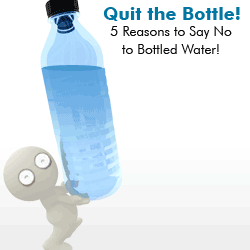
How many yearly deaths from lung and stomach cancers are related to radon in household drinking water in the United States?

Exactly what is radon and how many deaths are attributed to it via your drinking water? Radon is a colorless and odorless, naturally occurring radioactive gas that is formed by the radioactive decay of the element radium. This gas can dissolve in groundwater and volatilize when water is released from a faucet or showerhead. The U.S. Environmental Protection Agency recommends that public water suppliers remove radon from their water if levels exceed 300 picocuries per liter.
Just how does radon enter a water system? Radon gas is very soluble in water and the amount of radon dissolved in groundwater ranges from 100 to 3 million pCi/L. Radon is so common that most groundwater has some level of radon. On average, radon in water is believed to contribute about five percent of the total indoor air concentrations found in homes served by wells. Another way for radon to get into the water is pollution from lime and phosphate fertilizers that contain radium. Radium may leach through sandy soils or enter groundwater through sinkholes on agricultural land.
Just what are the health concerns for radon? The two principal concerns for radon are stomach cancer from ingesting radon and lung cancer from inhalation of radon byproducts. The health risk of radon inhalation is believed to be many times greater than the risk resulting from direct ingestion of radon contained in water. It has been estimated that there is an increased lifetime stomach cancer risk of between 0.25 to 1.0 percent per 100,000 pCi/L in a water supply, although there is no direct evidence of this. Radon in water is emitted into the air, especially where water is agitated or sprayed (shower, washing machine). The EPA has not set a Maximum Contaminant Level (MCL) for radon in drinking water at this time but recommends that any level of radon above 300 pCi/L should be a concern.
While there are no exact figures on this but most organizations and agencies who have studied radon exposure estimate that radon levels in household water contribute a very small fraction of the total lung and stomach cancers in the U.S. By 2000 estimates, about 160,000 people died per year from lung cancer. Most of these deaths are caused by smoking. About 12 percent of these deaths are believed to be caused by a combination of smoke inhalation and radon. The USEPA estimates that less than one percent of this 12 percent or about 150 out of the total 160,000 yearly deaths actually results from inhaling radon that is emitted from household water. The USEPA also estimates that ingesting radon in drinking water is responsible for only about 18 of the 14,000 stomach cancers per year.





